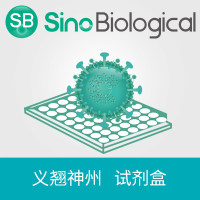DIRECT ELISA PROTOCOL
互联网
Buffers and Reagents:
Bicarbonate/carbonate coating buffer (100 mM) - antigen or antibody should be diluted in coating buffer to
immobilize them to the wells: 3.03 g Na2CO3, 6.0 g NaHCO3 (1000 ml distilled water) pH 9.6, PBS: 1.16 g
Na2HPO4, 0.1 g KCl, 0.1 g K3PO4, 4.0 g NaCl (500 ml distilled water) pH 7.4.
Blocking solution: commonly used blocking agents are BSA 1%, nonfat dry milk, casein, gelatin in PBS.
Wash solution: usually PBS or Tris-buffered saline (pH 7.4) with detergent such as 0.05% (v/v) Tween20
(TBST).
Antibody solution: primary and secondary antibody should be diluted in 1x blocking solution to prevent
nonspecific bindings.
Coating antigen to microplate
1. Dilute the antigen to a final concentration of 20 ?g/ml in PBS. Coat the wells of a PVC microtiter plate
with the antigen by pipeting 50 ?l of the antigen dilution per well.
2. Cover the plate with an adhesive plastic and incubate for 2 h at room temperature.
3. Remove the coating solution and wash the plate twice by filling the wells with 200 ?l PBS. The solutions
or washes are removed by flicking the plate over a sink. The remaining drops are removed by patting the
plate on a paper towel.
Blocking
4. Block the remaining protein-binding sites in the coated wells by adding 200 ?l blocking buffer, 5% non fat
dry milk/PBS, per well. Alternative blocking reagents include BlockACE or BSA.
5. Cover the plate with an adhesive plastic and incubate for at least 2 h at room temperature or, if more
convenient, overnight at 4°C.
6. Wash the plate twice with PBS.
Incubation with the Antibody
7. Add 100 ?l of the antibody , diluted at the optimal concentration (according to the manufacturers
instructions) in blocking buffer immediately before use.
8. Cover the plate with an adhesive plastic and incubate for 2 h at room temperature.
9. Wash the plate four times with PBS.
Detection
10. Dispense 100 ?l (or 50 ?l) of the substrate solution per well with a multichannel pipet or a multipipet.
11. After sufficient color development (if it is necessary) add 100 ?l of stop solution to the wells.
12. Read the absorbance (optical density) of each well with a plate reader.
Note: some enzyme substrates are considered hazardous (potential carcinogens), therefore always handle
with care and wear gloves.








